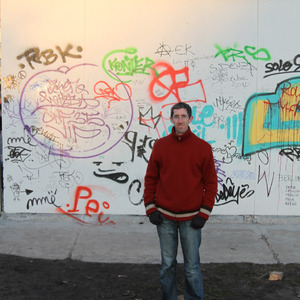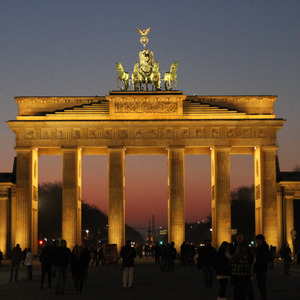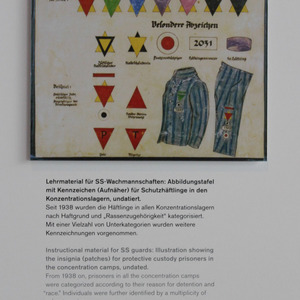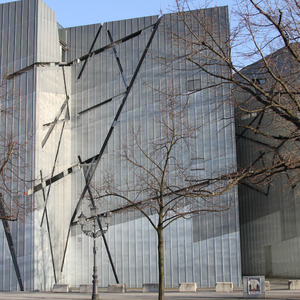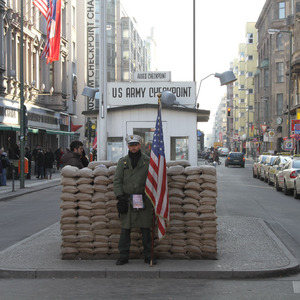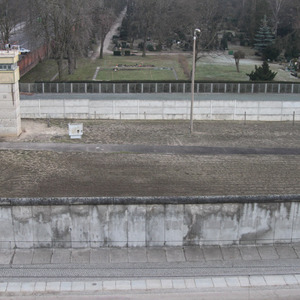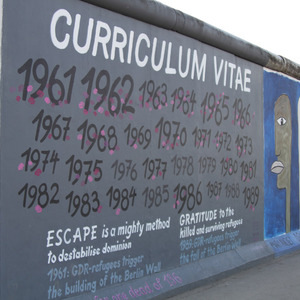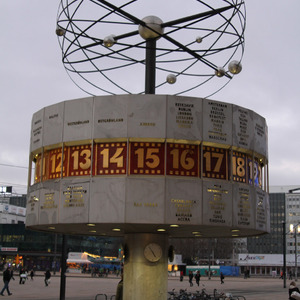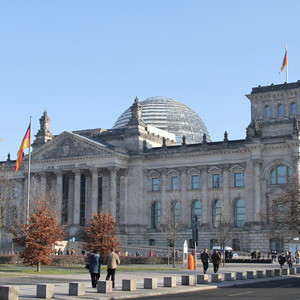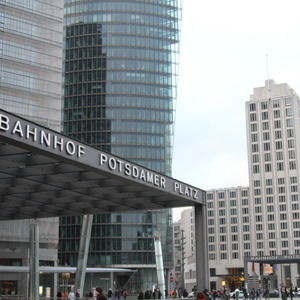
Douglas Stebila
Berlin, Germany
February 1, 2011 at 03:06AM Travel Berlin Germany
I'm currently in Germany visiting the Center for Advanced Security Research Darmstadt (CASED) at the Technical University of Darmstadt for research. While I've been working hard on research during the week, I've been away on the weekends exploring Germany. I flew through German airports many times (all flights lead to Frankfurt -- or at least all Star Alliance flights seem to) but had never been outside of an airport in Germany until this trip.This past weekend I visited Berlin, capital of Germany and one of the great cities of the world. I was not disappointed.
From the perspective of the mildly historically inclined tourist, German and Berlin history, as demonstrated by Berlin tourist attractions, is divided into roughly four time periods: 1) before World War II; 2) World War II; 3) the Cold War; and 4) unified Germany.
1) Before World War II: Now I admit there's a fairly big period of time covered by this first category. But on my sightseeing I didn't experience too much from this category. The most obvious example is the Brandenburg Gate, constructed in its current form in 1788-1791 and restored recently in 2000-2002. Going back even further, Berlin features a great collection of world history museums, with extensive Egyptian and Roman collections. Or so I'm told: when I tried to go to them on Sunday morning, each of them had a 45 minute line-up just to buy tickets. My time was best spent elsewhere.2) World War II: A short walk from the Brandenburg Gate is the Memorial to the Murdered Jews of Europe, a newly constructed memorial (opened in 2005). Taking up a whole city block, the above ground portion features a forest of grey concrete slabs of varying height. Underground is a memorial with displays and historical information. It's a solemn memorial to the devastation caused during the Holocaust and tries to commemorate the 6 million Jews murdered. I found the nearby Topography of Terror museum more informative, however. It describes the methods of the National Socialist party in coming to and maintaining power and implementing their agenda. I found it quite chilling how organized and precise their plans were. At right is the detailed system of insignia for identifying prisoners in concentration camps. My third main stop in the "World War II" category was the Jewish Museum Berlin, in a famous building designed by architect Daniel Libeskind. Strictly speaking, the Jewish Museum covers the history of Jewish people in Germany for over a thousand years. I place it into the "World War II" category if only for the nature of the building itself: stark, grey totalitarian architecture, marking the immensity of the loss in the Holocaust. Unfortunately, the building is a bit of a disappointment and ill-suited to holding a museum, a case of form over function. I've not been to the Crystal at the ROM in Toronto, but it was designed by the same architect, and I wonder if the same holds true there.
3) The Cold War: Slightly less depressing than World War II, but not much. Berlin was divided among the Allied Powers after the end of the war, with sectors controlled by the French, British, Americans, and Soviets. The Soviet Union closed the border in 1952, but between then and 1961 approximately 20% of the East German population (3.5 million people) migrated to West Germany. On one night in 1961, East German authorities sealed the border using a primitive barrier -- made of barbed wire and fences -- stretching 156 kilometres around the Western sectors of Berlin. Crossing was only allowed at a few locations (including the now-famous Checkpoint Charlie) and mostly for westerners: it was nearly impossible for East Germans to cross. Nonetheless, they still tried, and the barrier was continually upgraded until it was finalized in its 1980 form. In that form, there was an initial wall on the East German side, followed by an electric signal fence, trenches, barbed wire, watchtowers, large open gravel spaces, spotlights, and an additional final fence. This nearly impassable area was known as the "death strip", and 136 people died in and around the area of the Berlin Wall during its existence. Portions of the wall still exist in a few areas of the city. There's a Berlin Wall Memorial which preserves a portion of the death strip. Stupidly, you can't actually see the preserved portion. It has two walls the were meant to be impassable, and, instead of leaving the cross-section open to view, it's blocked by even taller memorial walls in that stark, totalitarian style of German memorial architecture I mentioned earlier. There's a viewing platform across the way that lets you see into the preserved portion, but it's a poor substitute for seeing it at ground level.
(Unrelated side note: Often while walking around Berlin, I'd hear Ronald Reagan's famous "Mr. Gorbachev, tear down this wall!" line echoing in my head.)
Not all of the Soviet-era remnants are doom-and-gloom, however. There's a fascinating hands-on museum on life in the DDR (as East Germany was officially known), featuring artifacts from behind the Iron Curtain. The museum was far too small for the number of people interested in it, but one of the best I visited in Berlin. Did you know that nude beaches were popular in East German as a way to rebuke the authorities? And there are lots of Soviet-era architecture and designs throughout the city, including this world clock (at left) in Alexanderplatz, a plaza near where I was staying. 4) Unified Germany: Berlin has lots of fascinating modern architecture. One of the highlights is the glass dome of the German federal parliament building, the Reichstag. The new German republic was declared here in 1990, and restoration began shortly thereafter so it could hold the parliament in the new German capital. The restoration included a glass dome in place of a copper dome, and it's apparently the most popular attraction in Berlin. So popular you need a ticket weeks in advance which I, alas, did not have. But it still looks pretty from the outside. Germany since 1990 has also invested heavily in public transportation, and I must comment on how incredible the train system is. Many of the stations are fantastically brand new, trains run frequently and regularly, and the high speed trains are comfortable and smooth. If only Canada and the United States had the political will to make such an investment.The rest of the pictures from my trip to Berlin are in my Germany picture gallery.
